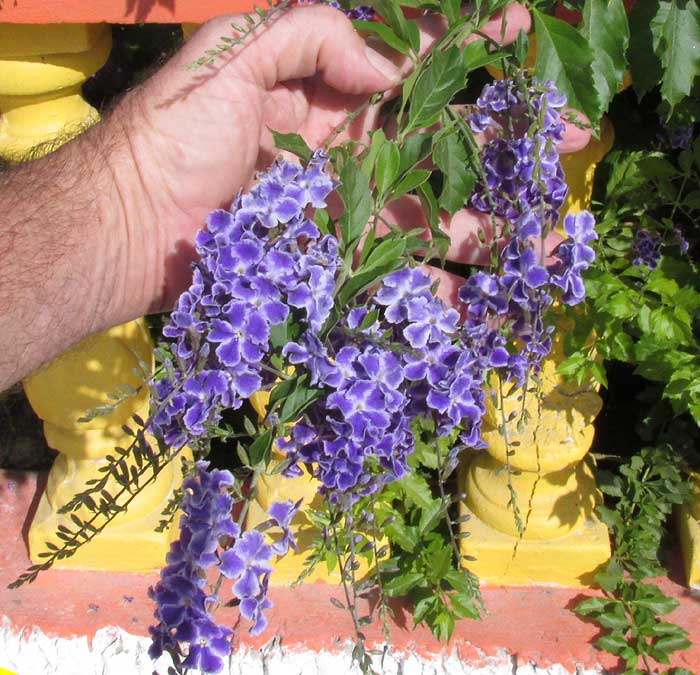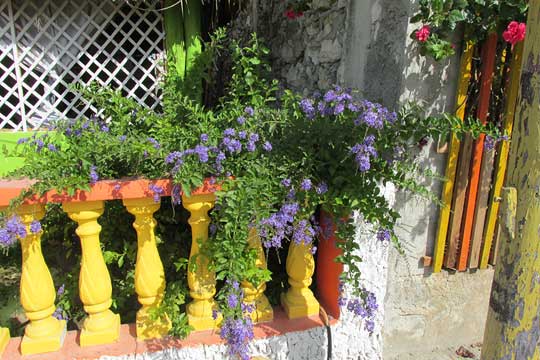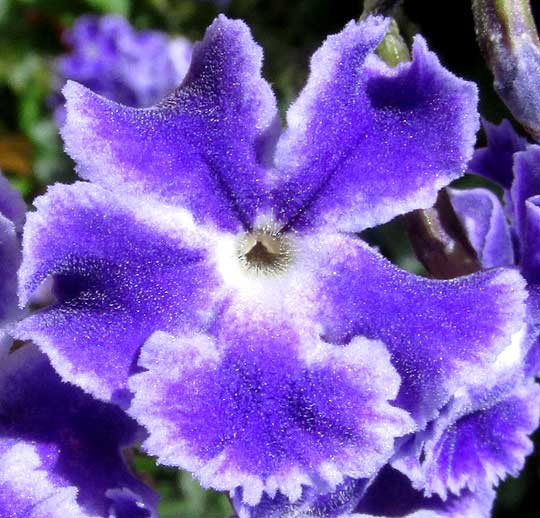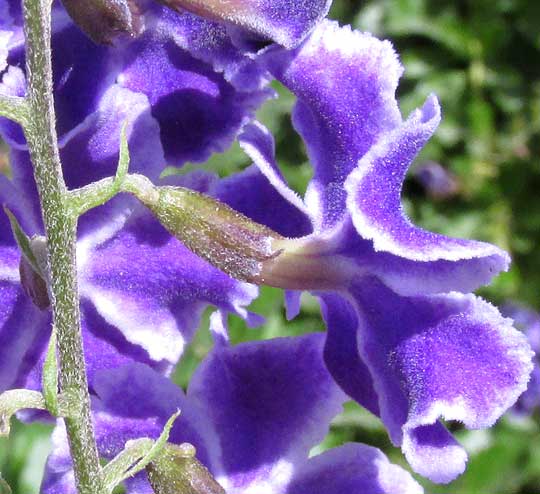Excerpts from Jim Conrad's
Naturalist Newsletter

from the February 8, 2015 Newsletter issued from Río Lagartos, on the Yucatan Peninsula's northern coast (~N21.60°, ~W88.16°), Yucatán state, MÉXICO
SKYFLOWER
We've observed that folks in Río Lagartos like to paint their houses bright colors, often with pleasing effect. The colors normally are bright, primary ones, so the other day when a certain dark lilac presence caught my eye mellowing the effect of an otherwise rambunctiously yellow, orange and chartreuse house, I had to take note. It was a flowering shrub I'd not noticed before. Below, you can see how it complemented its environment:

The flowers arose in long racemes that tapered to a point, as shown at the top of this page. The individual flowers as seen from the front were very slightly asymmetrical, with five corolla lobes that were crinkly and white along their margins, as seen below:

The blossom's asymmetry is more easily seen from the side, shown below:

When you see a shrub with two leaves arising at each stem lobe (opposite), and slightly asymmetric flowers with corollas exhibiting purplish hues, it's always a good bet to think first of the Verbena Family, the Verbenaceae. With that family in mind, it was easy to work out the genus simply by noticing this:
These details led to the genus Duranta, and the sometimes planted shrub known variously as Skyflower, Golden Dewdrop, Pigeon Berry, and whose binomial is DURANTA ERECTA.
Skyflower is native to Mexico south to South America, and the Caribbean. However, it's widely cultivated worldwide in tropical and subtropical gardens, and has gone wild in many places as an invasive species, as in Australia, China, South Africa and on several Pacific Islands.
At garden centers, Skyflower bushes are available in a wide variety of cultivar forms, including 'Cuban Gold,' 'Alba', 'Aurea', 'Aussie Gold', 'Gold Mound', 'Geisha Girl', 'Sapphire Showers', and 'Variegata.' Our Río Lagartos plant with its flowers' crinkled, white corolla lobes, is clearly a cultivar, since wild plants produce much less ornamented flowers.